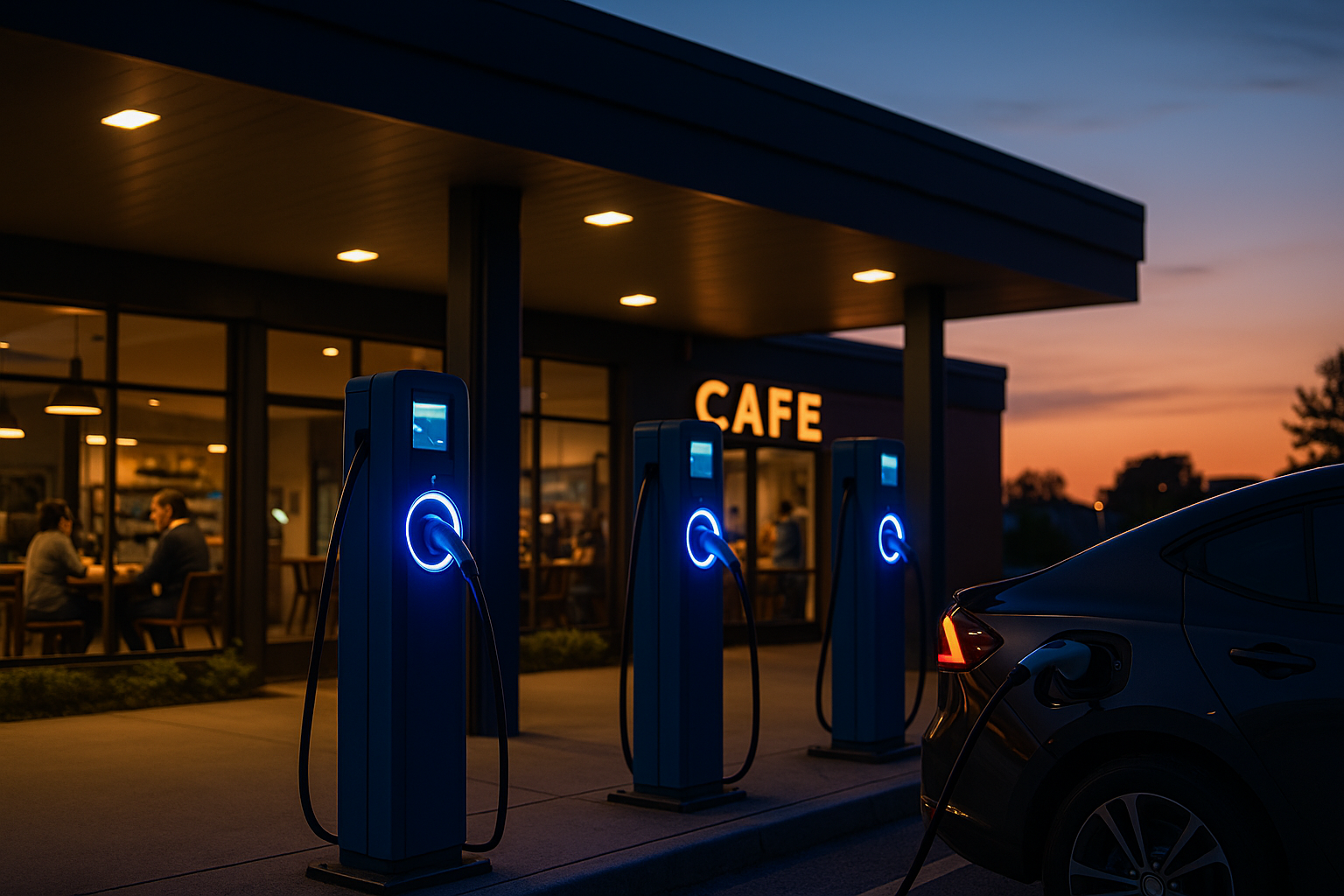How Gas Stations Are Quietly Turning Into EV Hubs
or decades, gas stations have been the heartbeat of American travel — humming with the smell of gasoline, the buzz of highway chatter, and the glow of fluorescent lights over convenience-store coffee.
Now, a quiet transformation is happening. Those same stations are starting to trade fuel pumps for fast chargers, evolving from pit stops into charging hubs — the next frontier of mobility.
🏗️ The Evolution Nobody Saw Coming
The shift didn’t happen overnight. In the early days of EV adoption, traditional gas chains largely ignored electrification. It wasn’t their game. Charging networks like Tesla’s Supercharger and Electrify America took the early lead, staking out prime highway real estate.
But the landscape has changed. With electric-vehicle sales surging and government incentives flowing, the big players are stepping in. Shell, BP, and Pilot Flying J have all announced major investments in nationwide EV charging infrastructure — and not just as side projects.
They’re repurposing entire properties to cater to drivers who spend 20–30 minutes charging instead of five minutes fueling. That downtime is valuable. It’s retail gold.
☕ From “Fill Up” to “Hang Out”
Gas stations are discovering something EV drivers already knew: charging takes time, but that time can be enjoyed.
Across North America and Europe, new-generation stations are starting to look more like roadside cafés than refueling depots.
Picture this:
Lounge seating with USB-C outlets
Reliable high-speed Wi-Fi
Locally roasted coffee and healthier snacks
Dedicated parking for EVs with solar canopies above
It’s a complete reimagining of the driver experience. Instead of rushing in and out, travelers linger. That’s great for business — and even better for the planet.
🔌 The Economics of the Plug
Why are energy giants investing billions in charging? The answer is futureproofing.
Every year, internal-combustion vehicles lose ground to electrics. Analysts project that by 2030, up to 40% of new car sales in the U.S. could be plug-in hybrids or fully electric.
That means the old model — profit per gallon — won’t last forever.
Instead, operators are pivoting toward:
Charging fees (per kWh or per session)
Retail upsells (coffee, snacks, merch)
Partner revenue (co-branded cafés and retail kiosks)
EV chargers are expensive to install — often $50,000+ per port — but they attract a premium audience: younger, tech-savvy consumers who spend while they wait.
🧭 Independent Stations Join the Charge
It’s not just the big names adapting. Smaller, independent gas stations are finding creative ways to join the movement.
Some are teaming up with third-party networks like EVgo or ChargePoint to host shared charging points. Others are adding solar panels and battery storage to offset installation costs — creating microgrids that are both sustainable and cost-effective.
For family-owned stations, this evolution can be the difference between decline and revival. Rural EV routes are still underserved, and these independents could become the unsung heroes of the next decade’s road-trip economy.
🛣️ The Road Trip, Reinvented
Imagine it’s 2030. You’re driving a sleek electric crossover from New York to Nashville. You pull into a former BP station that now glows with quiet, blue light.
Inside, there’s good coffee, a local food truck partnership, and charging bays with transparent canopies that harness solar power. You plug in, stretch, chat, maybe even shop — and 25 minutes later, you’re topped off and ready to roll.
That’s the future these conversions are building. Not dystopian — human.
⚙️ The Transition Challenges
Let’s be real: it’s not all smooth charging.
EV adoption still faces hurdles: grid capacity, charger reliability, and upfront infrastructure costs.
Yet, those challenges are being met head-on. Utility partnerships are popping up across states; new tax incentives are easing installation expenses; and a new generation of fast chargers promises 350 kW power that can add 200 miles in under 10 minutes.
If 2020–2024 was about proving EVs work, 2025–2030 will be about building where they work.
🌎 A Culture Shift in Motion
Car culture has always adapted — from carburetors to catalytic converters, leaded gas to unleaded, analog to digital dashboards. The move from fuel to electricity is just the next chapter.
But what’s fascinating is how human it feels.
Drivers still crave the same things — convenience, connection, and coffee.
Only now, the sound of an idling engine is being replaced by the quiet hum of electrons, and that familiar neon “Open” sign? It’s flickering back to life in a new color: blue.
Bottom Line: The gas station isn’t dying — it’s evolving. The hum of the future isn’t gasoline burning. It’s the soft whir of progress, charging quietly beside a cup of espresso.

